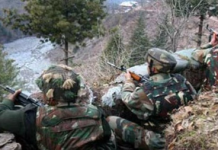
Photo: Pramod Singh Adhikari
The Naval Kishore Press established in Lucknow by Pandit Naval Kishore in 1858 was once the largest publishing initiative in South Asia and second only to the Alpine Press of France. Before it was closed in 1950, it had published Urdu translations of over 500 Hindi, Arabic and Persian texts, and 124 Sanskrit texts, including the Ramayana, the Mahabharata, the Bhagavad Gita and Manusmriti. In keeping with the legacy of Naval Kishore Press, popular Urdu poet Anwar Jalalpuri has translated The Bhagavad Gita into Urdu shayari. Former chairman of Uttar Pradesh Madarsa Board and former member of the Urdu Akademi (UP), Jalalpuri had earlier translated Rabindranath Tagore’s Geetanjali and Omar Khayyam’s Rubaiyat into Urdu poetry. Jalalpuri tells Aishwarya Gupta that through his latest book, Urdu Shayari mein Gita, he aims at an interaction of Hindu and Islamic worldviews.
Edited excerpts from an interview:
What inspired you to translate the Bhagavad Gita into Urdu shayari?
I completed my MA in English in 1968 but have always been a poet by nature, writing in many forms — nazm, ghazal, naat, ruba’i, tareekh, qasida, salaam. On completing my MA in Urdu in 1978, I wanted to pursue a PhD, for which I was looking for a topic that would integrate both Hindus and Muslims. And that is when I decided to translate the Gita into Urdu shayari.
During my research, I found that over 80 such translations have been done in the past, of which over 60 were in prose while the remaining were in poetry. Of these 24 translations in Urdu poetry, I couldn’t find more than eight copies through references, having looked from Patna to Kolkata to Hyderabad to Rampur. Most of these early age manuscripts couldn’t be traced or were destroyed. Also, I realised that the subject and learning of the Gita in itself is so wide that if I pushed to crunch and completed it, I would not have been able to deliver justice. But the idea and philosophy of Gita remained close to me throughout and has resulted in this book after 35 years.
What is your understanding of the Gita?
Like the Quran, the Gita also has a divine style and it contains the words of the Lord. The shayar that I am, I found it difficult to overlook the poetic lutf and andaaz in the shloks of the Bhagavad Gita. The philosophy of life after death is very attractive, whether you choose to believe it or not. Having translated the third chapter of the Quran Sharif in Urdu poetry in Tosh-e-Aakhirat, I found a striking similarity in the moral teachings of the two books. My aim was to tell the Urdu speaking awam (masses) that you are unaware of the great book that is the Bhagavad Gita and to tell the Hindus that the Gita is much more than a book you swear by in the court of law. An urgent need to see the sangam of these communities is what made me translate this book.
Which other works related to the Gita did you refer to while writing your book?
In order to attain a comprehensive understanding of the book, I made some key works on the Gita as my reference. These included Khawaja Dil Mohammed’s Dil ki Geeta, Osho’s eight volumes of Geeta, Mahatma Gandhi’s Bhagvad Gita According to Gandhi, Pandit Sundarlal’s The Gita and the Quran, Manmohan Lal Chhabra’s Mann ki Gita and works of Ajmal Khan and Hasanuddin Ahmed on the subject.

Anwar Jalalpuri
Aa Khar Prakashan
354 pp; Rs 350
How is your translation different from Khawaja Dil Mohammad’s?
Language plays a major factor in any work of translation. Dil Mohammad’s Dil ki Geeta was highly Persianised due to which it failed to gain popularity among common people. I have made a necessary effort to translate the shloks in awami Urdu and Hindustani, so that it is easily understood by all, especially those who are not familiar with the backdrop of the Mahabharata. Beher (meter of Urdu poetry) and grammar of the language need to be given specific attention. This form of translation is masnavi (detailed or elaborate), which gives a story-telling like appeal to the shayari. This has resulted in 701 shloks from 18 chapters of the Bhagavad Gita to culminate in do misre waale 1,761 sher (1,761 two-line couplets).
Started and majorly promoted by Lucknow’s Naval Kishore Press, does this secular tradition of translations have any more cultural relevance or has it merely been reduced to the nostalgic value of ganga-jamuni tehzeeb?
The society is changing very rapidly and I often encounter my friends, writers in both Hindi and Urdu, complaining that there isn’t enough work happening in either language. The contemporary literary scene has very few people who offer the kind of sincerity and integrity required for such works. Pandit Naval Kishore was too big a man in terms of stature and the work he did through his press over a century ago. Today, if someone is trying to achieve even five percent of what he did, I think we should appreciate it. As far as the relevance of the ganga-jamuni tehzeeb is concerned, I believe that in any society there are three major stakeholders who have the power to promote or demote communal harmony — politicians, religious leaders and writers. If even one of them does otherwise, the tehzeeb will be difficult to sustain.
Being a reputed and senior nazim (convenor or anchor) for some of country’s well-known mushairas, what changes have you witnessed since the time of Kaifi, Faiz and Majrooh?
Just like any other sphere, the culture of mushairas has undergone a considerable change in the past three decades. Some new practices that might be acceptable to some and not to others have entered its ambit. Clapping, for instance, was considerable a distasteful action during the proceedings of a traditional mushaira, but is now widely practiced. It is seen as a positive change. We no longer live in the times of Meer or Ghalib, but the wise thing would be to keep the learnings of the past intact and still be accommodative to the present. Whenever I am in charge of nizamat (anchoring), I forewarn others from reciting mazhabi shayari (communal poetry).
Having been a close friend of Munawwar Rana and a former member of the UP Urdu Akademi, do you support his decision of resigning as the president of the institution?
Both Nawaz Deobandi (Chairman) and Munawaar Rana were appointed in February by CM Akhilesh Yadav. As his friend, it would be embarrassing for me to comment on his decision. But as a shayar, I firmly believe that for someone as determined as Munawwarji, he would have succeeded in getting the government to concede to his demands, had he not resigned within three months.
aishwarya@tehelka.com













